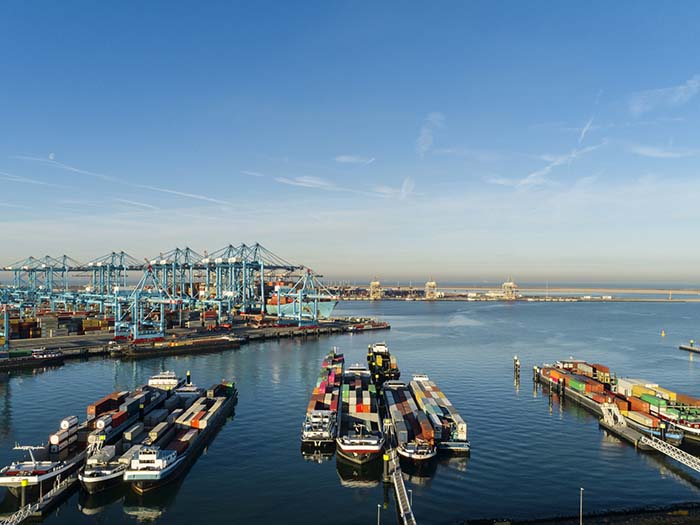7 Critical Risks Cannabis Businesses Need to Be Aware of When Buying Insurance

The cannabis business is booming.
The industry saw a record $17.5 billion in sales in 2020 and is expected to continue on this trajectory.
New states are joining medical and recreational markets every year, with New Jersey becoming the most recent entry into the scene. Recreational sales began this week in the state.
Even with — or maybe because of — this massive growth, cannabis companies face a number of risks and insurance challenges. Here are seven of the most prominent risks facing the industry.
1) Insurance Needs Aren’t Unique But Federal Illegality Still Causes Complications
The good news for cannabis businesses is that many are not seeking out unique coverages. These firms are purchasing products like property insurance, product liability coverage and workers’ compensation.
“There’s property, excess liability, products liability, commercial auto repairs,” Kirsten Renvyle, underwriter with Cannasure, said. “Those are probably the most common ones we’re seeing.”
“The way I look at cannabis companies is that they’re very similar to any other company. They just happen to operate in a federally illegal commodity,” added Kevin O’Brien, cannabis practice leader, Marsh.
Though the coverages they’re seeking are common, many cannabis businesses struggle to find coverage.
Insurers are hesitant to work with them due to the drug’s illegal status at the federal level. That may change soon, however, as carriers are getting more comfortable with the risk.
“I think the trend is definitely toward expansion, but it’s still an extremely tight market,” O’Brien said. “There’s more carriers that are kind of dipping their toe in every day.”
2) Safe Insurance and Banking Solutions Are Still Hard to Find
Marijuana’s status as a Schedule 1 drug has come with a windfall of consequences for cannabis businesses. Chief among them is a hesitancy on the part of banks and insurers to work with legal growers and dispensaries.
This hesitancy stems from the fact that federal law classifies all marijuana-related business endeavors as criminal enterprises no matter whether they occur in a state where the drug has been legalized or one that has not.
“Federal legalization seems to be the hurdle that we’ve experienced with carriers and brokers insuring and going after these types of risks,” said Kristy Kendle, vice president of underwriting for middle/small businesses in the California region at CopperPoint.
Two pieces of legislation, Secure and Fair Enforcement (SAFE) Banking Act and the Clarifying Law Around Insurance of Marijuana (CLAIM) Act, seek to address these issues by clarifying that banks and insurance companies can take on cannabis-related business endeavors without facing federal penalties. But Congress has been slow to act on it.
“The law is going 35 miles an hour when the industry is going 120,” O’Brien said. “In terms of fair banking and financial services there is a huge gap in the industry.”
3) Theft and Security Risks
Since cannabis businesses are forced to deal entirely in cash, they also face increased theft and security risks.
“Like any retail store operation, you’ve got the potential for theft, not necessarily workplace violence,” said Woody Hill, vice president, enterprise loss control at CopperPoint Insurance Companies. “But obviously, as a scheduled drug, people may want to go in [the building] and think there’s an opportunity to rob the location.”
Cannabis zoning laws can increase these risks. Local regulations may limit the number of cannabis businesses in any given area, pushing some into dangerous parts of a city.
O’Brien cites local laws governing where cannabis business can be as an issue for clients in California in particular.
“The state has put this high-value commodity in the middle of a high-crime zone,” he said.
4) Wildfire Risk Abounds
Last year, wildfires in California alone burned almost 2.6 million acres of land, the Center for Disaster Philanthropy reported. The American Farm Bureau named wildfires as one of the top two causes of the at least $12.5 billion in crop and forage losses the U.S. saw in 2021.
Those losses include legal marijuana growers.
Most marijuana crops are uninsured since plants that contain more than 0.3% of THC, the drug’s primary psychoactive component, aren’t eligible for the federal crop insurance program, the New York Times reported.
“I’m based here in Portland, and Oregon has been hit with a number of wildfires really recently,” O’Brien said. “So I think that’s probably top of mind.”
Though wildfire risk mostly affects growers whose crops can be wiped out by the flames, dispensaries also need to stay apprised of wildfires in their area, which could damage their properties, as well as those that may affect their suppliers.
5) Workers’ Compensation Concerns
Any business with employees has workers’ compensation risk. In the cannabis sector, these risks will differ between farms, dispensaries and manufactures, however.
Cannabis farms will see more ergonomic risks and those related to heavy machinery, similar to what others in the agricultural sector face.
“It is an interesting industry with many facets, but it’s not any more unique than any other agribusiness operation — growing strawberries, growing tree nuts,” Hill said.
“You may see exposures relative to poor ergonomics that could lead to musculoskeletal related injuries. There’s bending, stretching — things like that. The extraction phase of cannabis poses other safety risks as two of the three most common methods involve use of extremely flammable solvents.”
On the retail side, workplace violence caused by theft or robberies is obviously a concern.
Beyond that, dispensaries should consider their commercial auto exposures. During the pandemic, many dispensaries pivoted to delivery, either by acquiring companies or setting up operations of their own. Some are still offering those services.
“One thing I would add on the retail side is the auto exposure,” Kendle said. “That’s something we look at as part of the exposures and the underwriting process.”
6) Talent Gap
Like all companies, marijuana firms are struggling with the talent gap caused by the Great Resignation.
“The biggest concern we hear from most of our customers — and this is in all industries — is hiring the right individuals and bringing in the right talent to do these jobs,” Hill said.
Hill explained the marijuana industry’s rapid growth is exacerbating talent concerns and increasing safety risks. The legal marijuana industry is projected to grow at a compound annual growth rate of 26.7% over the next several years, eventually reaching $70.6 billion by 2028, per Grand View research.
“We typically see that in many industries when companies are growing so quickly, the focus on health and safety is not necessarily where it should be,” he said.
7) M&A and Bankruptcy Risk
Mergers and acquisitions are on the rise in the cannabis sector and they’re expected to accelerate in 2022 as well.
In 2021, the New York-based Viridian Capital Advisors tallied 306 M&A transactions in the industry, MJ Biz Daily reported. Only 86 transactions were counted for that same period in 2020.
“Big companies are getting bigger and swallowing a lot of smaller companies,” Renvyle said.
While some companies may have an eye towards growth through merger and acquisitions, others in the industry are finding themselves struggling to survive. High tax rates, a still-thriving illicit market and security threats all make running a profitable cannabis business a challenging enterprise.
“There’s going to be a lot of companies that go out of business,” O’Brien said.
If a cannabis business faces bankruptcy, the businesses cannot obtain relief from U.S. bankruptcy courts due to the drug’s illegal status, Forbes reports. &










